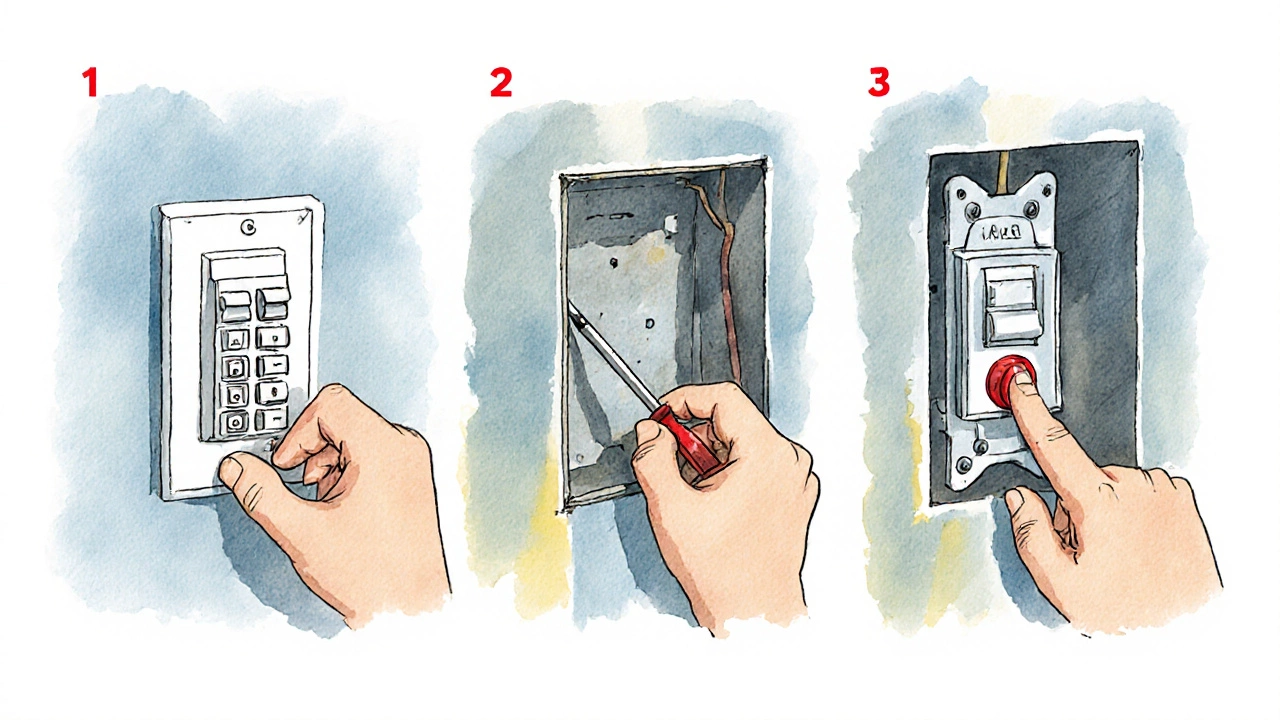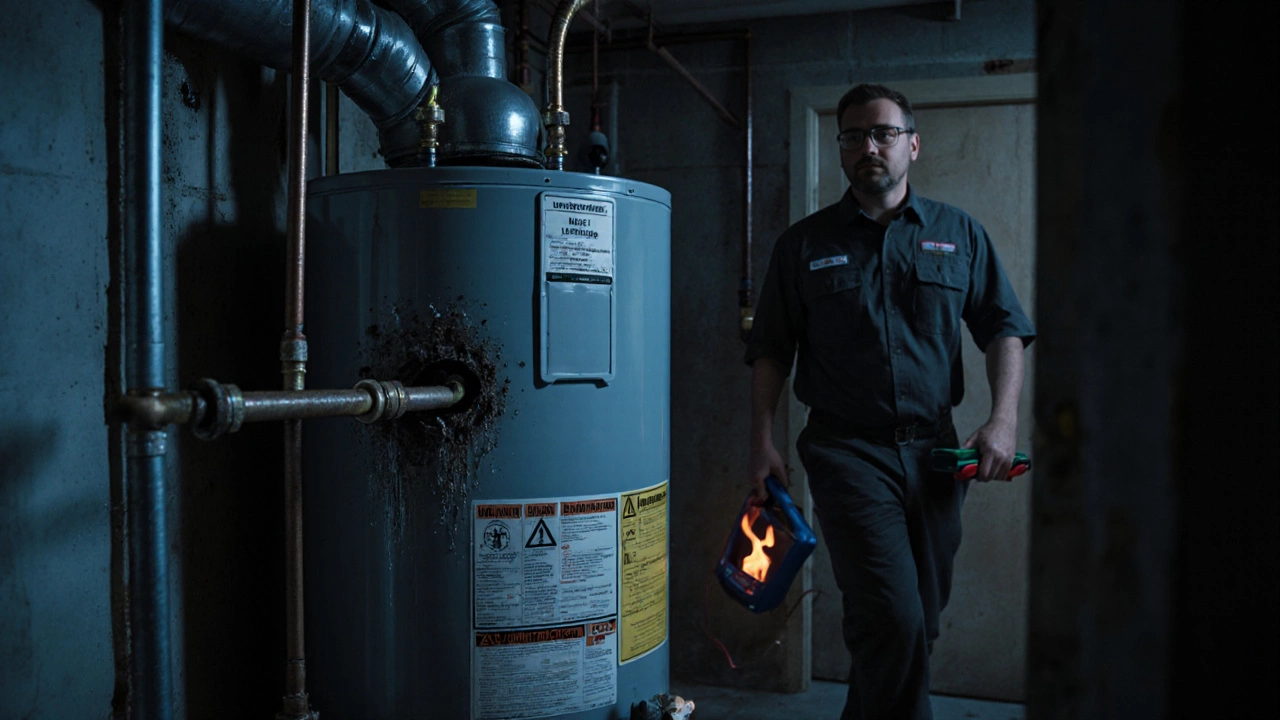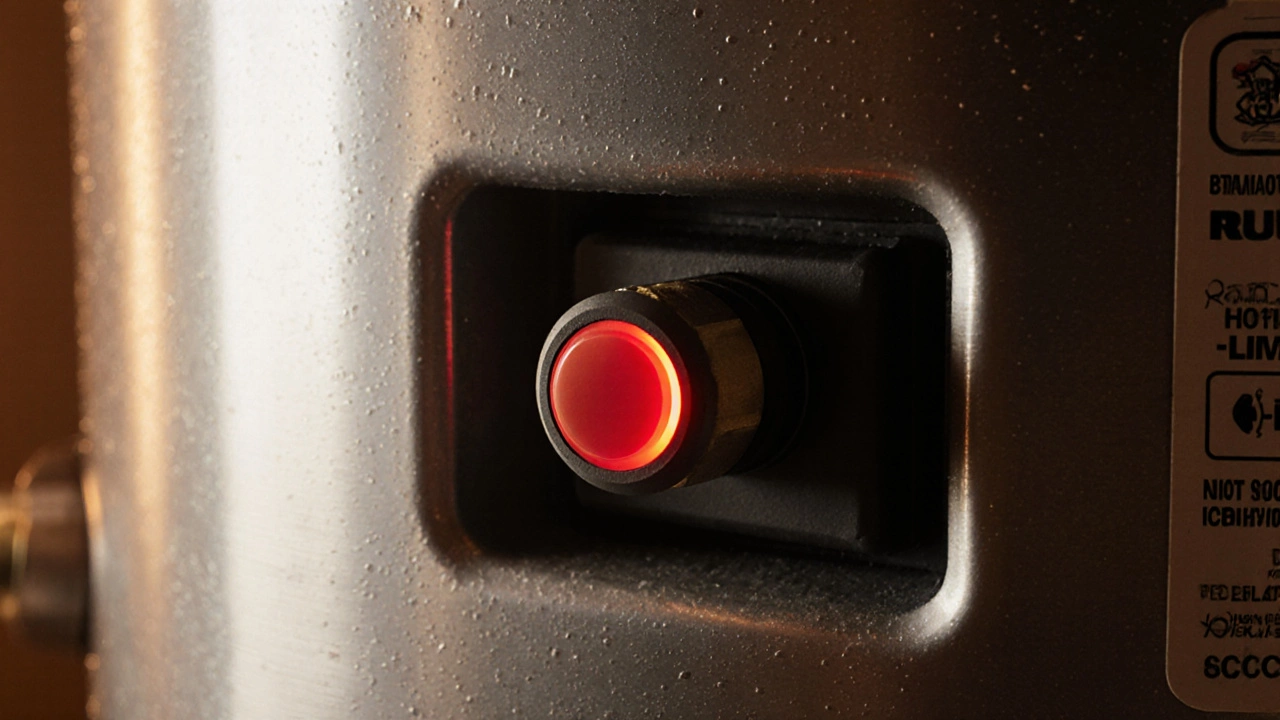Water Heater Reset Safety Checker
Safety Check
Results & Recommendations
When the hot water runs cold or the heater trips, the first instinct is to hit the water heater reset button. But is that a quick fix or a recipe for disaster? This guide walks you through exactly what the reset does, when it’s safe, and how to avoid costly mistakes.
Quick Takeaways
- The reset button is a high‑limit safety switch that trips when water gets too hot.
- Press it only after the heater cools down and the power is off.
- Electric and gas heaters have different reset procedures.
- Repeated trips signal deeper problems - don’t keep resetting.
- When in doubt, call a licensed plumber or electrician.
What the Reset Button Actually Does
Water Heater Reset Button is a thermal safety device (often called a high‑limit switch) that cuts power to the heating elements when the water temperature exceeds a preset threshold. It protects the tank from overheating, which could damage the unit or cause a fire.
In most electric models the switch is mounted on the side of the tank, behind a small access panel. In gas units, the reset is part of the High Limit Switch, which shuts off the gas valve if the thermostat senses unsafe heat levels.
When It’s Safe to Press Reset
Before you even think about pressing the button, follow these safety checks:
- Turn off the power at the Circuit Breaker for electric heaters, or shut off the gas supply for gas heaters.
- Allow the tank to cool for at least five minutes. Hot water can still be scalding.
- Inspect the access panel for signs of water leakage, burnt wires, or corrosion.
- Consult the Manufacturer's Manual for model‑specific guidance.
If any of these steps reveal damage, skip the reset and call a pro.
How to Properly Reset an Electric Water Heater
Electric heaters use two heating elements and a thermostat. The reset button is part of the thermostat circuit.
- Locate the Thermostat compartment, usually on the side of the tank.
- Remove the access panel with a screwdriver.
- Find the red reset button attached to the thermostat.
- Press firmly; you’ll feel a click if the switch resets.
- Replace the panel, restore power at the Circuit Breaker, and wait 30 minutes for the water to heat.
- Check the temperature with a thermometer. If it spikes above 140 °F (60 °C), turn off power again and investigate.
Note: Some newer models use a digital control board. In those cases, the reset button may be a virtual button in the menu - follow the manual.

How to Properly Reset a Gas Water Heater
Gas heaters have a pilot light and a Temperature Sensor that works with the high‑limit switch.
- Turn the gas control knob to the “OFF” position.
- Wait at least one minute for any lingering gas to dissipate.
- Locate the High Limit Switch - usually near the burner assembly behind a metal cover.
- Press the red reset button. You should hear a click.
- Turn the gas knob back to “ON” and relight the pilot according to the manufacturer’s instructions.
- Observe the flame; a stable blue flame indicates proper ignition.
- After 30 minutes, feel the hot water temperature. If it’s uneven or the switch trips again, stop and call a professional.
Warning Signs Not to Reset
Repeated trips are a red flag. Below are conditions that warrant a call instead of a DIY reset:
- Persistent low hot‑water output.
- Water leaking from the tank or around the thermostat housing.
- Burnt or scorching smells from the electrical compartment.
- Frequent short‑circuit breakers tripping after a reset.
- Visible corrosion on the Temperature Sensor or wiring.
These symptoms often point to a failing heating element, a broken thermostat, or sediment buildup that needs flushing.
Common Mistakes and Risks
Even well‑meaning homeowners can slip up:
- Pressing the button while the unit is still hot: This can cause a sudden surge of electricity, damaging the thermostat.
- Leaving the power on while working: Risk of electrical shock.
- Using the wrong type of replacement part: Some heaters require a “dual‑element” reset, not a standard one.
- Ignoring the root cause: Resetting merely masks an underlying issue, leading to repeated failures.

When to Call a Professional
If you encounter any of the following, stop and schedule service:
- The reset button won’t stay engaged after three attempts.
- There’s a buzzing sound from the electric heating element.
- Gas odors linger after relighting the pilot.
- Water temperature exceeds 150 °F (65 °C) despite the thermostat set at 120 °F (49 °C).
- You’re unsure whether your heater is electric or gas - a qualified plumber/electrician can verify.
Professional inspection usually includes checking the High Limit Switch, testing heating elements with a multimeter, and flushing the tank to remove sediment.
Quick Comparison: Reset Process for Electric vs Gas Heaters
| Aspect | Electric Water Heater | Gas Water Heater |
|---|---|---|
| Primary safety device | Thermostat with built‑in reset | High‑limit switch with temperature sensor |
| Power source to cut | Circuit breaker | Gas valve |
| Typical reset location | Side panel, red button | Behind burner cover, red button |
| Post‑reset steps | Restore power, wait 30 min, test temp | Relight pilot, observe flame, test temp |
| Common failure cause | Failed heating element or thermostat | Clogged burner or faulty sensor |
Frequently Asked Questions
What does the reset button actually reset?
It resets the high‑limit safety switch that cuts power (electric) or gas (gas heater) when the water temperature gets too high.
Can I press the reset button while the heater is still hot?
No. The unit must cool down and the power should be off. Pressing it hot can cause a surge that damages the thermostat.
How often is it normal for the reset button to trip?
Occasionally, when a large demand (like multiple showers) pushes temperature up. If it trips more than once a month, there’s likely a deeper issue.
Do gas and electric heaters use the same reset button?
They serve the same safety function but are wired differently. Electric units have a simple red button on the thermostat; gas units integrate the button with a high‑limit switch and gas valve.
What should I do if the reset button won’t stay down?
Turn off power or gas, let the unit cool, inspect for water leaks, burnt wires, or corroded contacts. If everything looks okay, call a licensed technician - the internal component is likely failed.
Is it safe to replace the reset button myself?
If you’re comfortable with basic electrical or gas work and follow the manual, you can. Otherwise, a professional ensures proper wiring and compliance with local codes.
Bottom line: the reset button is a safety safeguard, not a permanent fix. Use it sparingly, follow the step‑by‑step procedures, and know when to call in a specialist. Your water heater will thank you with steady, safe hot water for years to come.

